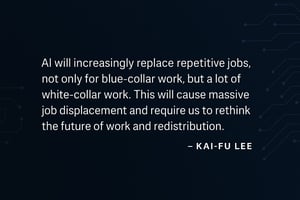The Conversation Is Loud—But Is It Productive? The internet is flooded with content about...
Employee Advocacy on LinkedIn: What Pride 2025 Is Teaching Us About Authentic Allyship

This year, many brands are skipping the rainbow-washed posts.
Instead, their leaders are speaking up. And it’s working. It’s a subtle but powerful shift that reflects a deeper understanding of how trust and authenticity function in the workplace and in public discourse.
What Is Employee Advocacy on LinkedIn?
Employee advocacy happens when people, not brand pages, communicate what a company stands for. It’s most impactful when employees, particularly those in leadership, share their perspectives rooted in personal values, lived experiences, and professional insights. People trust people more than they trust logos or slogans, and nowhere is this more evident than on LinkedIn.
A heartfelt post from a CMO about their queer sibling or allyship journey carries emotional weight and cultural resonance that a templated corporate graphic simply can’t match. It tells us something real about your culture, and that matters.
Why It Matters During Pride 2025
This year’s Pride season has shown a quiet evolution in how companies are engaging with the moment. Many brands have chosen not to post rainbow-themed content from their company pages. Instead, individual leaders and employees are using their personal platforms to share stories, reflections, and statements of solidarity.
This shift comes in response to growing fatigue with performative allyship and rainbow capitalism. Younger audiences, especially Gen Z, are highly attuned to authenticity. They don’t want campaigns; they want proof. Brands that allow their employees to speak genuinely and personally are earning more respect and engagement than those that rely on sanitized corporate messaging.
Corporate Support for Pride 2025
Despite the backlash and increased scrutiny, some companies are continuing to publicly support Pride initiatives, and they’re doing it through the voices of their leaders.
Accenture: CEO Julie Sweet emphasized the company’s long-standing commitment to inclusivity. She framed Pride not just as a celebration, but as a catalyst for reinvention and business value.
Microsoft: Corporate Vice President Vasu Jakkal highlighted the connection between authenticity, psychological safety, and innovation. The message underscored that when people feel safe to bring their whole selves to work, trust grows, and with it, creativity and performance.
These statements go beyond PR. They signal internal culture and shared values, voiced at the top, and amplified across teams. They also demonstrate that inclusion can be communicated without relying on a single corporate post. Instead, it lives in the voices of those who lead.
What the Edelman Trust Barometer Tells Us
The Edelman Trust Barometer, widely recognized as a global authority on trust, has been tracking public sentiment for over 20 years. Its data consistently shows that people place greater trust in individuals than institutions. In particular, employees are seen as more credible than CEOs or government officials.
This matters on platforms like LinkedIn, where visibility and trust go hand-in-hand. When a mid-level manager or team lead shares a story about Pride, it’s often more effective in building brand credibility than a top-down initiative. These personal expressions foster connection, which in turn deepens audience loyalty.
How This Builds Long-Term Brand Trust
Inclusion should never be a seasonal campaign. It must be embedded in company culture and reflected consistently across channels and interactions. When employees speak up in their own words, they invite others to understand and believe in what a brand truly represents.
Employee-led messaging doesn’t just humanize a company. It drives engagement, starts meaningful conversations, and aligns with the way trust is built in 2025: through honesty, relatability, and emotional intelligence.
How to Do Employee Advocacy Right (and Avoid the Performative Trap)
Employee advocacy, when done right, isn’t scripted. It’s supported. Companies should offer optional resources, never mandates, and invite/encourage/empower employees to share their own perspectives if and when they feel safe doing so.
Instead of relying on slogans, center the voices of people with lived experience. Let LGBTQ+ employees lead the conversation, but only if they choose to. Allyship should never be extractive. It should be protective, intentional, and accountable. When leaders model this kind of support, others follow.
Strategic Moves for Brands on LinkedIn
There are tangible steps companies can take to align their internal values with their external messaging. Encourage executives to post authentic reflections during key cultural moments. Build internal campaigns that inspire—not require—employee visibility. Offer training and support to help managers understand how to lead inclusively and communicate effectively on public platforms.
And perhaps most importantly, ensure that your DEI efforts are not just public-facing. Align internal programs, hiring practices, and leadership pipelines with the values you’re voicing. The consistency should be as ethical as it is strategic.
If You’ve Been Quiet So Far, Here’s Your Opportunity
If your brand has stayed quiet so far this Pride, that’s not a failure. It might be an invitation to speak more authentically, to listen more closely, and to empower your people to lead the conversation.
Let your leaders speak. Let your values speak. Let your people speak.
Employee advocacy isn’t about saying more. It’s about saying something that actually means something.
If you read this far and feel ready to build a strategy rooted in real voice and real trust, let's talk.




